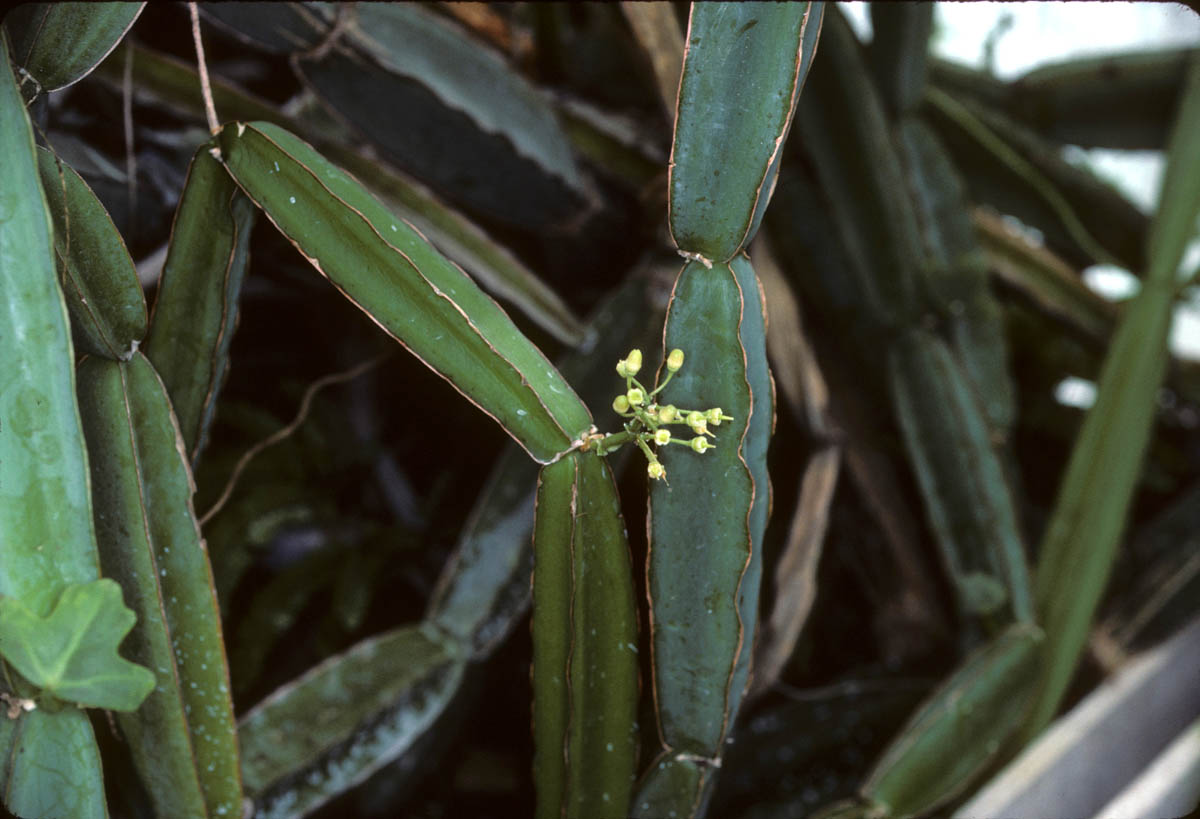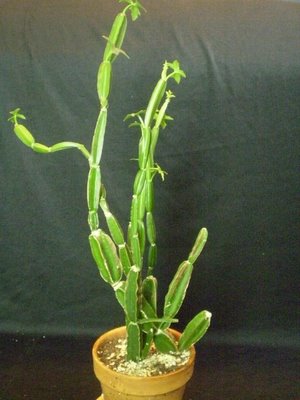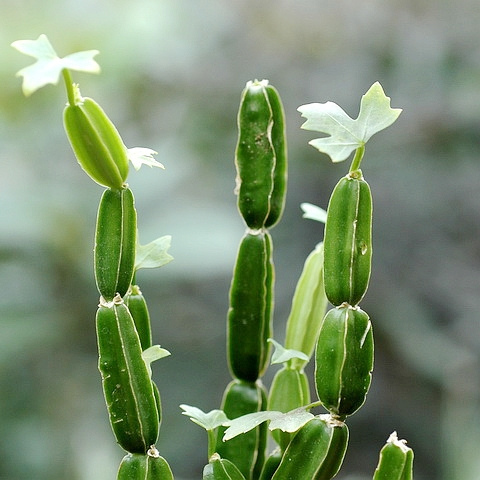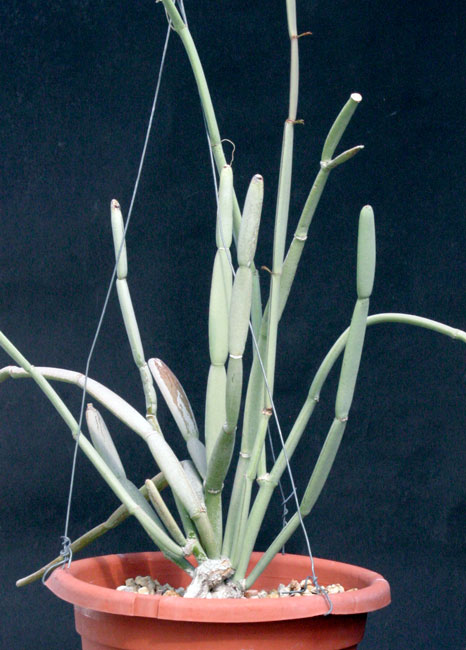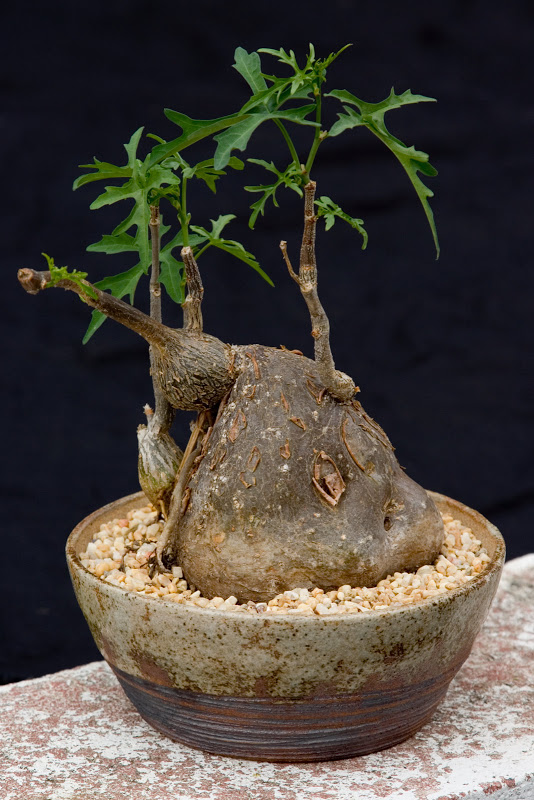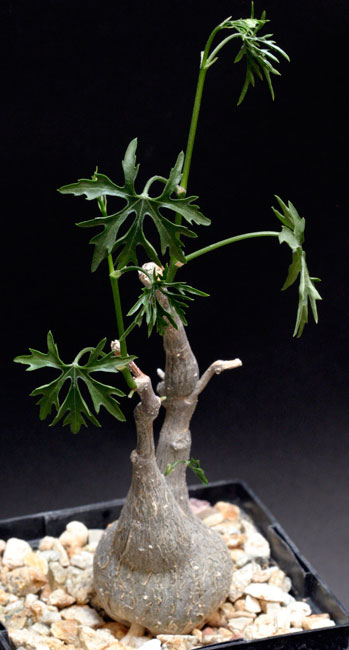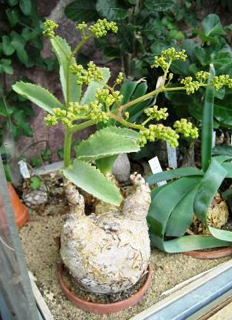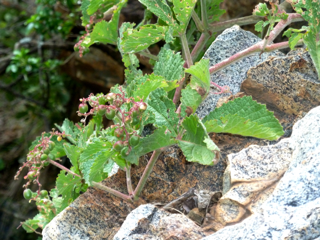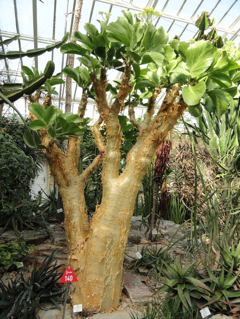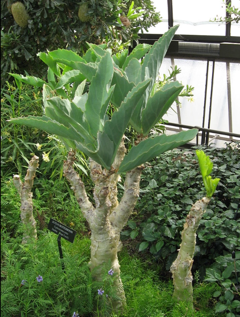Submitted by: Jim Tanner
Contents: Cissus, Cyphostemma, LATIN LOOKUP
Cissus is a genus of approximately 350 species of lianas (woody vines) in the grape family (Vitaceae). They have a cosmopolitan distribution, though the majority are to be found in the tropics.
Medicinal
Cissus quadrangularis has been evaluated for potential medical uses. As a source of carotenoids, triterpenoids and ascorbic acid the extracts may have potential for medical effects, including “gastroprotective activity” and benefits in terms of “lipid metabolism and oxidative stress”. Cissus quinquangularis was used by the Maasai people of Kenya to relieve some of the symptoms of malaria.
Ornamental
Cissus antarctica, Cissus alata and Cissus incisa are cultivated as garden plants, depending on area of the world. Succulent members of the genus such as Cissus quadrangularis are also found in the nursery trade but tend to be frost tender and are thus not widely cultivated.
Ecology
Cissus species are used as food plants by the larvae of some Lepidoptera species including Hypercompe eridanus and Hypercompe icasia.
Taxonomy
The generic name is derived from the Greek word κισσος (kissos), meaning “ivy”.[5] In the 1980s the genus was split according to some details of the flower. The large caudiciform species were moved to the new genus Cyphostemma.
The genus name was established by Carl Linnaeus who used species epithets that are adjectives with feminine grammatical gender in Latin (e.g., C. trifoliata L.). This matches the pattern that names of trees ending in -us in Latin have feminine gender, although other plant names ending in -us are usually masculine.
Cyphostemma is a member of the Vitaceae or grape family. The members of this genus span the range of extremely easy to grow plants to real challenges. Most of the species will grow large, given time, good root room, lots of fertilizer, and water during the growing season.
Most Cyphostemma will set fruit. In almost all cases, the fruit is toxic to humans and most pets, although freely eaten by birds. The seeds in the fruit are ripe when the fruit turns color (usually red).
The key to success with these plants is to pay attention to the native habitat. Cyphostemma juttae, common in many collections, comes from South Africa. It takes some frost with no damage, and grows in the ground in Southern California, putting on bulk and character in just a few years.
Cyphostemma seitziana, on the other hand comes from Namibia, and is much less tolerant of unprotected cold and overwatering.
Propagation is easy from cuttings and seeds. Seed of all the common and even some of the truly rare species is sometimes available through the CSSA or through some of the better South African and US seed dealers. Germination is erratic (days to months), and only one seed should be sown per pot. The seedling mix should be sterile and organic, and hold a lot of water. Scarring the seeds to allow water penetration helps. The seeds should be completely buried to provide uniform moisture. A plastic bag over the mix will help keep everything uniform. The bag should be removed as soon as any sign of green appears, the seedling leaves are large, and will rot if they touch the plastic. Softwood cuttings should be taken when active growth is occurring. Rooting does not require or even seem to benefit from hormones.
Tom Glavich
The meanings of latin plant names on this page – from http://davesgarden.com/guides/botanary/
- alata [a-LAY-tuh]
Winged. - antarctica [ant-ARK-tee-kuh]
Of or from the Antarctic region. - cactiformis [kak-TIF-for-miss]
Shaped like a cactus. - cirrhosum [sir-ROH-sum, kir-ROH-sum]
Having tendrils, curly hair. - Cissus [KISS-us, SISS-us]
Latin name for Ivy. - Cyphostemma [sy-foh-STEM-uh]
From the Greek kyphos (tumor, hump) and stemma (garland, crown). - incisa [in-KYE-suh, in-SIGH-suh]
Deeply cut. - juttae [JOO-tay-ee]
Named for Jutta Dinter, the wife of Professor Kurt Dinter, 20th century German botanist and collector in Africa. - quadrangularis [kwad-ran-gew-LAIR-iss]
Four-angled. - trifoliata [try-foh-lee-AY-tuh, try-foh-lee-AT-uh]
- Three leaves.
- tuberosa [too-ber-OH-suh, tew-ber-OH-suh]
Tuberous.
